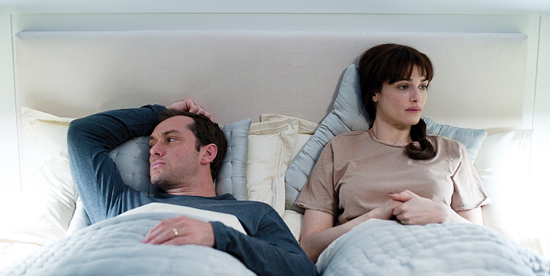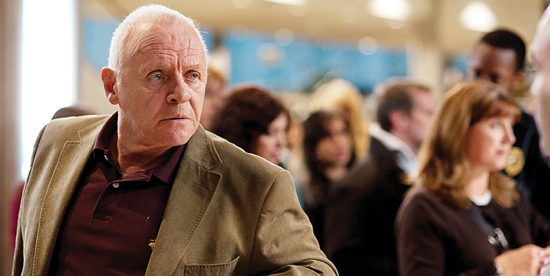The original inspiration for Fernando Meirelles’ 360 was Arthur Schnitzler’s 1897 play La Ronde. This apparent intertextuality lends an appealingly substantial, literary gloss to the film, following as it does in the footsteps of cinematic adaptations by the likes of Max Ophüls (1950), Roger Vadim (1964) and the opera director Otto Schenk (1973) to name just a few. However, 360 may have been inspired by La Ronde, but Peter Morgan’s screenplay has loosened the play’s formal structure far past the point of recognisable adaptation.
As such, the narrative structure fits it into a far broader category. It’s an enduringly familiar kind of ensemble drama: the stories of a series of disparate characters unfold across the world and are gradually revealed to be intertwined. This basic structure underpins recent films as diverse as Babel (Alejandro González Iñárritu, 2006), Love Actually (Richard Curtis, 2003) and He’s Just Not That Into You (Ken Kwapis, 2009) and, more loosely, the likes of Traffic (Steven Soderbergh, 2000) and 21 Grams (Iñárritu, 2003).
360 follows a succession of couples whose lives intersect and overlap in various ways. The film does not reproduce the strict, dance-like structure of La Ronde, in which each scene involves one half of the couple from the previous scene, and the whole thing comes full circle at the end as the other partner from the first scene reappears. Instead the conceit, the formality of the dance, is geographical. It takes the movie from city to city, travelling west around the world from Bratislava to Vienna to Paris to London to Rio to Denver to Phoenix.
The relationships range widely too, from prostitute and client to a pair of sisters, a man making a temporary connection with a woman he feels fatherly towards to an unspoken workplace love affair. The connections between them are trite, even banal – for example, a woman whose face we don’t see clearly in one portion is revealed to have travelled around the world to join in someone else’s segment. The randomness may be part of the point being made about life, but it’s not a point that can be made meaningful on its own.
Joining little stories together is an appealing way to build a narrative. The very fact that there are a number of them means an overarching structure is established automatically, and the burden of carrying the film is spread more widely than usual. If one link in such an ensemble piece is weak, well, the impetus will shift soon anyway. But the flipside is that it’s very hard to create a set that are likely to hold similar weight and levels of engagement for everyone, which means that many viewers are going to find them uneven, or inconsistent.
The central section starring Maria Flor, Ben Foster and Anthony Hopkins is riveting. Flor’s radiant innocence as optimistic Laura and Foster’s tightly wound menace as newly released sex offender Tyler create a real sense of tension and danger, while Hopkins’ tragic father is restrained and moving. But these sections derive most of their impact from the quality of the performances, rather than the script or story. They succeed in spite of the structure, not because of it.

Other portions are much, much less interesting. The main characters in Bratislava and Vienna (Lucia Sipisová as Mirka, Mark Ivanir as a gangster boss) are entirely overshadowed by the secondary tale of Anna and Sergei (Gabriela Marcinkova and Vladimir Vdovichenkov). As for Rachel Weisz and Jude Law as depressing married couple Rose and Michael… their stories are as flat and dull as the London streets they play out in.
The geography is strangely treated, too. Bratislava, Vienna, Paris and London all look the same, grey and drab and miserable. When we cross the Atlantic, things perk up – Denver’s snow is dramatic, Phoenix is drenched in beautiful sunshine – but it’s an odd, imbalanced contrast. Not for 360 the strict demarcating colour schemes of Soderbergh or Iñárritu.
Meirelles is best known as the director of City Of God (2002) and The Constant Gardener (2005). Both are thrillers first and foremost, but use this entertaining format to address social and humanitarian issues. This focus is still present in 360, but in a rather diluted form. In fact, 360 is closer to Love Actually than Babel; the emphasis is firmly on the relationships of the various couples at the centre of each interlocking tale, rather than the social injustice that several of them suffer. This shift in focus on Meirelles’ part has produced a lighter, more forgettable movie.



